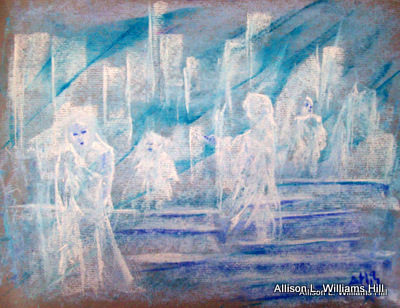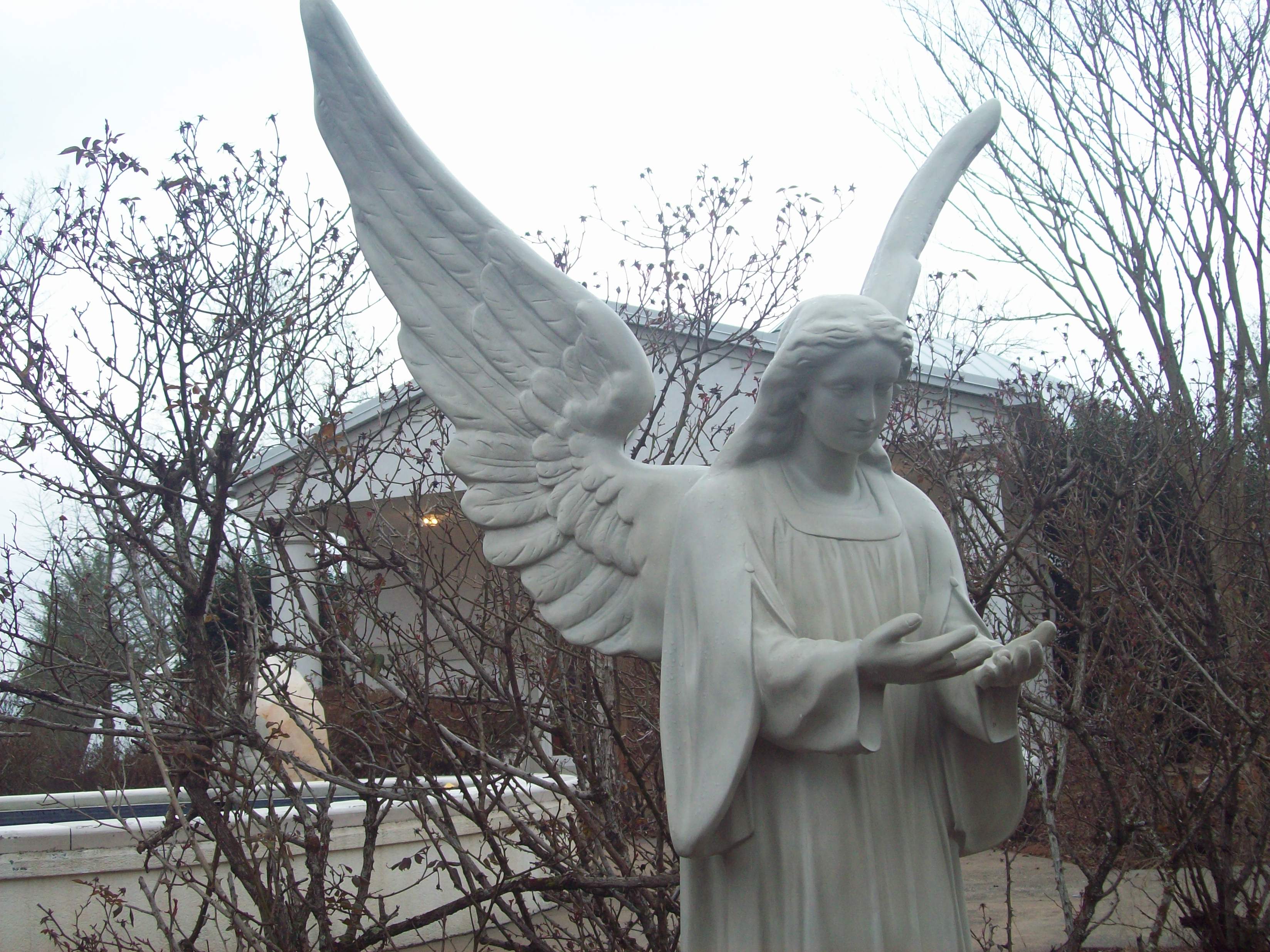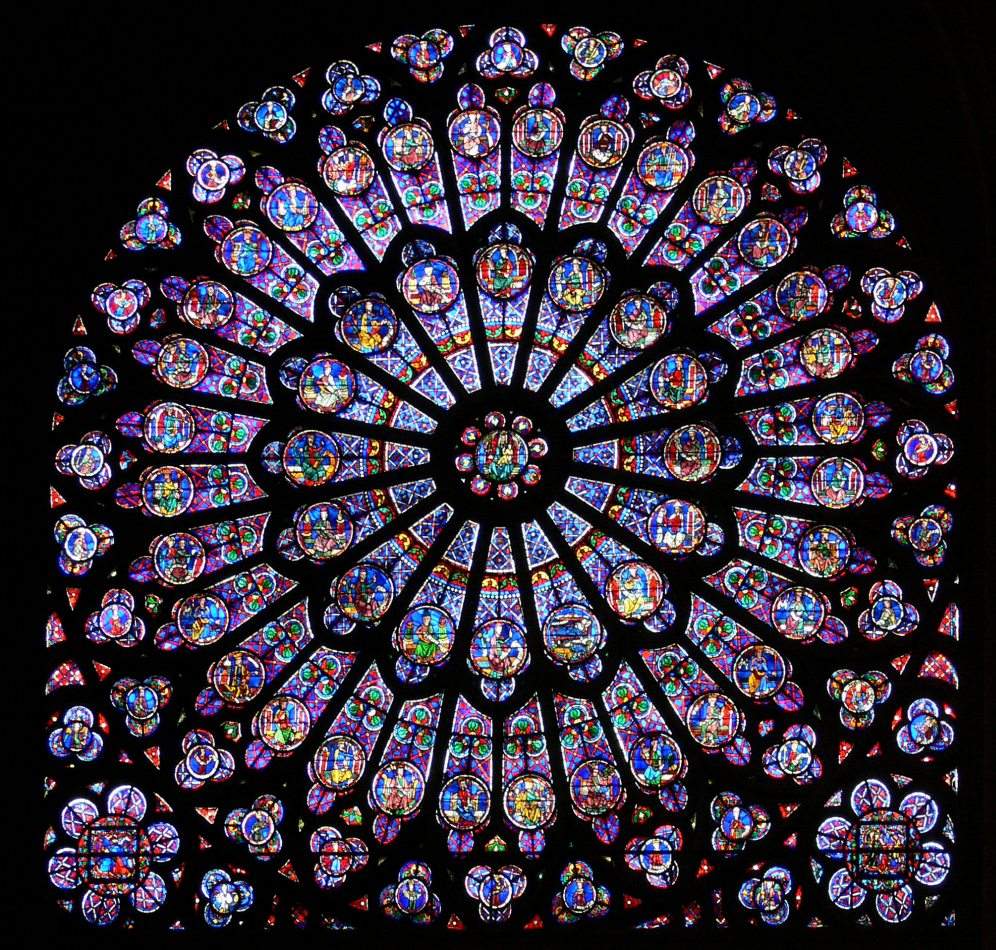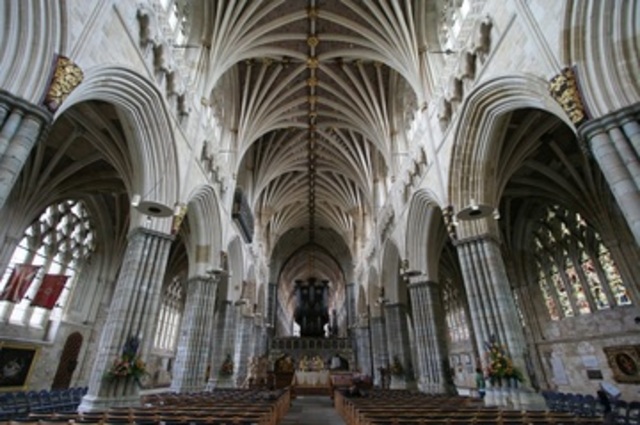The Church
Part 1

he church, as an institution, has served to guide people in living on the planet. Communities organized authorities as judicial, political and religious representatives to preserve behavior that supports the collective and adjudicate outcomes when there are conflicts. There was always a means to address the different minds and ideas of individuals. These institutions and authorities have certainly worked to reduce their burdens by attempting to direct behavior among the masses. With the church, specifically, this institution has violated peoples’ minds and bodies for as long as it existed. NEXUS magazine provides free downloads of their fascinating and detailed articles written by Tony Bushby about the church and many other known and unknown subjects about humanity.

The Hermes' Temple by Allison L. Williams Hill
All of this directs you, the individual spirit, to discern. The Creator has provided all of us with minds and humanity, in whatever culture you live in unless there are barriers to entry, the ability to receive information. We are sponges. We absorb what is presented and authorities stroke, mold, and shape data to evoke a range of desired responses. I think of Peter Jennings and his televised news discussion with children who practiced saying Osama Bin Ladden’s name and repeating how jealous he must have been of the United States and what it accomplished after the September 11th false flag event.
To bring it back from the modern era to the 18th and 19th centuries, the popes were not pious. The following is a quote from a book called The Cradle of Christ written by Bishop Frotheringham:
"Many of the popes were men of the most abandoned lives. Some were magicians (occultists); others were noted for sedition, war, slaughter and profligacy of manners, for avarice and simony. Others were not even members of Christ, but the basest of criminals and enemies of all godliness. Some were children of their father, the Devil; most were men of blood; some were not even priests. Others were heretics. If the pope be a heretic, he is ipso facto no pope." (from “Criminal History of the Papacy,” Part1)

Delphi Angel by Allison L. Williams Hill
In the 11th century, Grottaferrata Teofilatto removed leaders that were not favorable to him and his murderous acquisition of the papal throne and allowed "the palace of the popes" to embrace a homosexual enterprise. These were the men who were positioned to make decisions for the people the Catholic Church inserted itself between: humans and their Creator, a position to attempt to ensure their immortal employment. It is 2019 and the pedophilic priests who were known for their heinous crimes were transferred to third world countries where they kept ruining the lives of young children.

Skylight at Delphi Church by Allison L. Williams Hill
Rodrigo Borgia, who was elected Pope Alexander VI in the 15th century, moved into the papacy after buying votes from cardinals. He liked having dancing naked women before he became pope and after. He sired twelve children out of wedlock and housed his mistresses in the papal palace. It was said that he had an incestuous affair with his daughter. In all of these situations, the so-called pope used the money to enrich himself and his family.
People were angry but they could not do anything about it, that is, abut anyone who want to be the pope. However, they could pursue their spiritual development, their devoutness alone or with others of like mind. Secret societies grew in this manner because the powerful had other ideas to maintain control insuring their power. Humans are social beings, however, shunning and shaming are effective methods of bringing errant members into the fold again. Enduring rejection makes a person stronger and desire human companionship less. This may be a part of one’s spiritual development when corporeal. The Creator is the only connection has ever or will ever need.

The Pool at Delphi by Allison L. Williams Hill
from "By Centres Of Magnetism" from The Hidden Sides of Things by C.W. Leadbetter
WE all recognise to some extent that unusual surroundings may produce special effects; we speak of certain buildings or landscapes as gloomy and depressing; we understand that there is something saddening and repellent about a prison, something devotional about a church, and so on. Most people never trouble to think why this should be so, or if they do for a moment turn their attention to the matter, they dismiss it as an instance of the association of ideas.

Notre Dame Cathedra, churchl exterior
Probably it is that, but it is also much more than that, and if we examine into its rationale we shall find that it operates in many cases where we have never suspected its influence, and that a knowledge of it may be of practical use in everyday life. A study of the finer forces of nature will show us not only that every living being is radiating a complex set of definite influences upon those
about him, but also that this is true to a lesser degree and in a simpler manner of inanimate objects.

Reims Cathedral interior
Our Great Cathedrals
We know that wood and iron and stone have their own respective characteristic radiations, but the point to be emphasised just now is that they are all capable of absorbing human influence, and then pouring it out again. What is the origin of that feeling of devotion, of reverential awe, which so permeates some of our great cathedrals that even the most hardened Cook' s tourist cannot entirely escape it? It is due not only to the historical associations, not only to the remembrance of the fact that for centuries men have met here for praise and prayer, but far more to that fact itself, and to the conditions which it has produced in the substance of the fabric.

To understand this we must first of all remember the circumstances under which those buildings were erected. A modern brick church, run up by contract in the shortest possible time, has indeed but little sanctity about it; but in mediaeval days faith was greater, and the influence of the outer world less prominent. In very truth men prayed as they built our great cathedrals, and laid every stone as though it had been an offering upon an altar. When this was the spirit of the work, every such stone became a veritable talisman charged with the reverence and devotion of the builder, and capable of radiating those same waves of sensation upon others, so as to stir in them similar feelings. The crowds who came afterwards to worship at the shrine not only felt these radiations, but themselves strengthened them in turn by the reaction of their own feelings.

Milan Cathedral
Still more is this true of the interior decorations of the church. Every touch of the brush in the colouring of a triptych, every stroke of the chisel in the sculpture of a statue, was a direct offering to God. Thus the completed work of art is surrounded by an atmosphere of reverence and love, and it distinctly sheds these qualities upon the worshippers. All of them, rich and poor alike, feel something of this effect, even though many of them may be too ignorant to receive the added stimulus which its artistic excellence gives to those who are able to appreciate it and to perceive all that it means.

Notre Dame Cathedral Rose Window
The sunlight streaming through the splendid stained glass of those mediaeval windows brings with it a glory that is not all of the physical world, for the clever workmen who built up that marvellous mosaic did so for the love of God and the glory of His saints, and so each fragment of glass is a talisman also. Remembering always how the power conveyed into the statue or picture by the fervour of the original artist has been perpetually reinforced through the ages by the devotion of successive generations of worshippers, we come to understand the inner meaning of the great influence which undoubtedly does radiate from such objects as have been regarded as sacred for centuries.

Details of Salisbury Cathedral by Allison L. Williams Hill
Such a devotional effect as is described in connection with a picture or a statue may be entirely apart from its value as a work of art. The bambino at the Ara Coeli at Rome is a supremely inartistic object, yet it has unquestionably considerable power in evoking devotional feeling among the masses that crowd to see it. If it were really a work of art, that fact would add but little to its influence over most of them, though of course it would in that case produce an additional and totally different effect upon another class of persons to whom now it does not in the least appeal.

Salisbury Cathedral
From these considerations it is evident that these various ecclesiastical properties, such as statues, pictures and other decorations, have a real value in the effect which they produce upon the worshippers, and the fact that they thus have a distinct power, which so many people can feel, probably accounts for the intense hatred felt for them by the savage fanatics who miscalled themselves puritans. They realised that the power which stood behind the Church worked to a great extent through these objects as its channels, and though their loathing for all higher influences was considerably tempered by fear, they yet felt that if they could break up these centres of magnetism, that would to a certain extent cut off the connection. And so in their revolt against all that was good and beautiful they did all the harm that they could-- almost as much perhaps as those earlier so-called Christians who, through sheer ignorance, ground up the most lovely Grecian statues to furnish lime to build their wretched hovels.


In all these splendid mediaeval buildings the sentiment of devotion absolutely and literally exudes from the walls, because for centuries devotional thought-forms have been created in them by successive generations. In strong contrast to this is the atmosphere of criticism and disputation which may be felt by any sensitive person in the meeting-houses of some of the sects. In many a conventicle in Scotland and in Holland this feeling stands out with
startling prominence, so as to give the impression that the great majority of the so-called worshippers have had no thought of worship or devotion at all, but only of the most sanctimonious self-righteousness, and of burning anxiety to discover some doctrinal flaw in the wearisome sermon of their unfortunate minister.

Church References
Bushby, Tony, November 2006, The Criminal History of the Papacy Part 1 of 3, NEXUS Magazine [DECEMBER 2006 – JANUARY 2007] pp. 33-40 www.nexusmagazine.com
Bushby, Tony, December 2006, The Criminal History of the Papacy Part 2 of 3, NEXUS Magazine [FEBRUARY - MARCH 2007] pp. 41-48; 77-79 www.nexusmagazine.com
Bushby, Tony, December 2006, The Criminal History of the Papacy Part 3 of 3, NEXUS Magazine [APRIL - MAY 2007] pp. 49-55;79 www.nexusmagazine.com
Related Articles
Coppens, Phillip, Power Struggles and Murder in the Vatican, NEXUS Magazine [AUGUST – SEPTEMBER 2011] pp.53-57, 83 www.nexusmagazine.com
Bushby, Tony, March 2007, The Forged Origins of the New Testament, NEXUS Magazine [JUNE – JULY 2007] 53 -59, 80 www.nexusmagazine.com
Links

The above meditation mandala will be available soon.



















